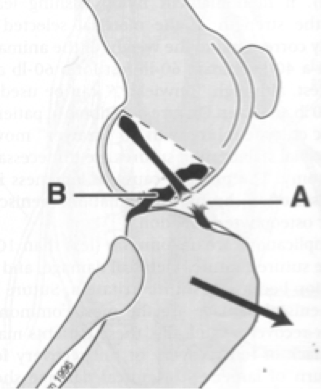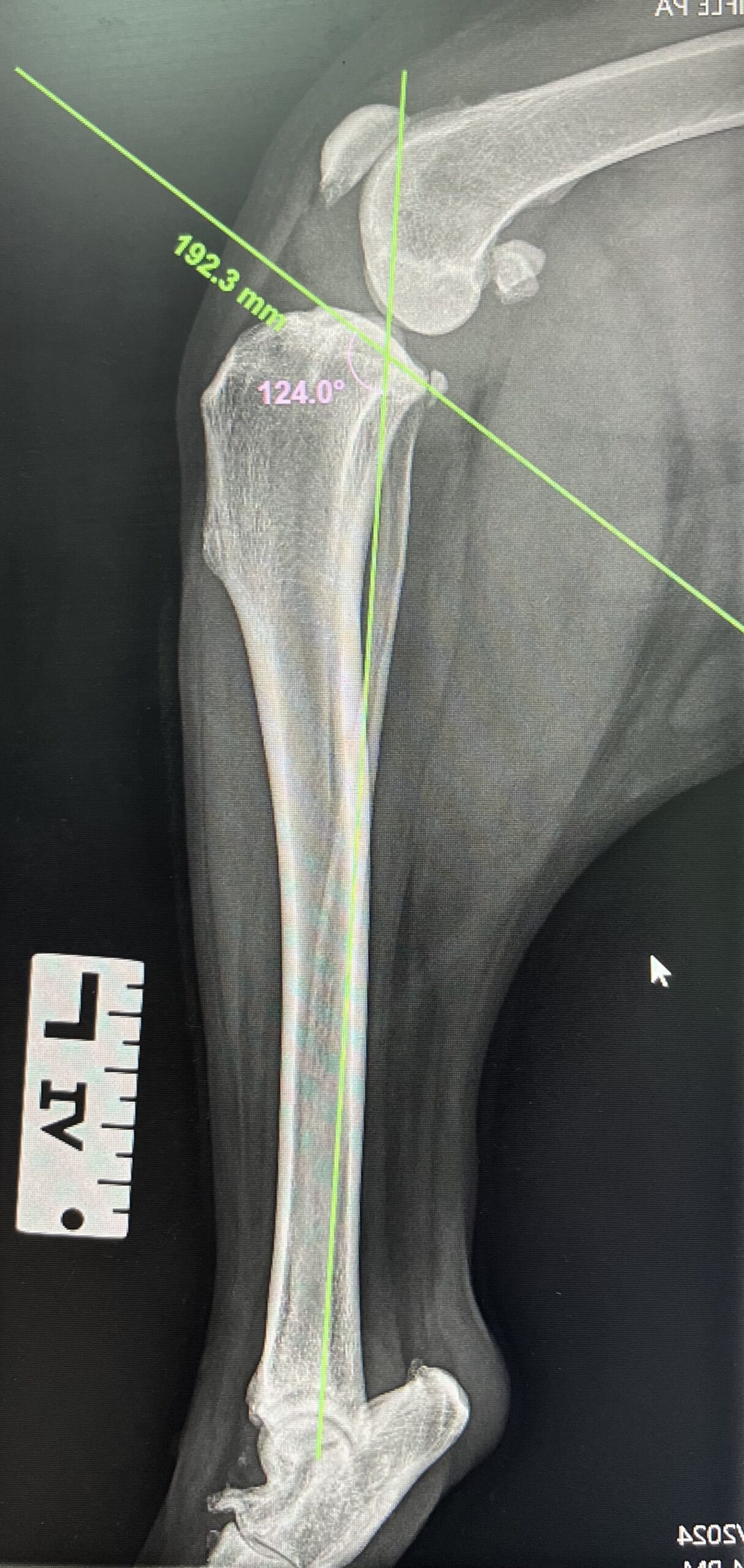Cruciate surgery
TPLO (Tibial Plateau Leveling Osteotomy) is a surgical procedure commonly performed to treat cranial cruciate ligament (CCL) injuries in dogs. This injury is similar to an ACL tear in humans and is a frequent cause of hind limb lameness. The TPLO surgery stabilizes the knee joint, allowing the dog to return to normal activity with less pain and a reduced risk of arthritis.

When is TPLO surgery recommended?
TPLO surgery is recommended for dogs with:
- Cranial cruciate ligament rupture: Either partial or complete tears of the ligament.
- Chronic lameness: Persistent lameness that does not respond to conservative treatment like medication or physical therapy.
- Active or large breeds: Dogs that are active or large, as they put more stress on their knees, making TPLO a preferred treatment.
The TPLO procedure
1. Pre-surgical preparation
- Diagnostic Imaging: X-rays and sometimes MRI are used to assess the knee joint.
- Pre-Anesthesia Screening: Blood tests to ensure the dog is healthy enough for anesthesia.
2. Surgery
- Anesthesia: The dog is placed under general anesthesia.
- Incision: A surgical incision is made on the inside of the knee to expose the tibia.
- Tibial plateau leveling: The surgeon cuts and rotates the tibial plateau to flatten its slope. This adjustment changes the dynamics of the knee joint, eliminating the need for the CCL to stabilize the joint.
- Fixation: The rotated bone segment is secured with a metal plate and screws to ensure it remains in the correct position during healing.
- Closure: The incision is closed, and the dog is moved to a recovery area.

Post-surgical care
1. Immediate post-operative care
- Pain management: Pain relief is provided through medications.
- Restricted activity: The dog’s activity is strictly limited, often involving crate rest and short, controlled leash walks.
2. Rehabilitation
- Physical therapy: Tailored exercises to strengthen the muscles around the knee and improve joint flexibility.
- Gradual increase in activity: Over several weeks, activity levels are gradually increased as the dog heals.
3. Follow-up visits
- Check-ups: Regular veterinary visits to monitor the healing process with physical exams and follow-up X-rays.

Recovery timeline
- First 2 Weeks: Strict confinement with very limited activity.
- 4-6 Weeks: Gradual increase in activity, usually including short, controlled leash walks.
- 8-12 Weeks: By this time, most dogs have regained significant function and can return to normal activities.
- Full Recovery: Typically occurs around 12-16 weeks post-surgery, though some dogs may take longer.
Benefits of TPLO surgery
- Stability: The procedure provides excellent stability to the knee joint, even in active or large dogs.
- High success rate: Most dogs regain full function of the leg and can return to normal activity levels.
- Reduced arthritis progression: By stabilizing the joint, TPLO helps slow down the progression of arthritis, a common consequence of CCL injuries.

Risks and Complications
- Infection: There is a risk of infection, as with any surgical procedure.
- Implant problems: The metal plate or screws may cause irritation or need removal.
- Non-union or delayed healing: In some cases, the bone may not heal as expected, requiring additional treatment.
- Cost: TPLO surgery is expensive, typically ranging from $3,000 to $5,000, depending on the location and the complexity of the case.
Alternatives to TPLO - Lateral suture technique (extracapsular repair): Uses sutures to stabilize the knee, often recommended for smaller or less active dogs.
- Conservative management: Rest, anti-inflammatory medications, and physical therapy, sometimes recommended for older dogs or those with mild symptoms.

Prognosis
The prognosis after TPLO surgery is generally excellent, with most dogs returning to their previous activity levels. It is considered one of the most effective surgical options for treating CCL injuries in dogs, particularly in active or large breeds. If you suspect your dog has a CCL injury or if your veterinarian has recommended TPLO surgery, consulting with a veterinary orthopedic surgeon can provide you with the best course of action tailored to your dog’s specific needs.
